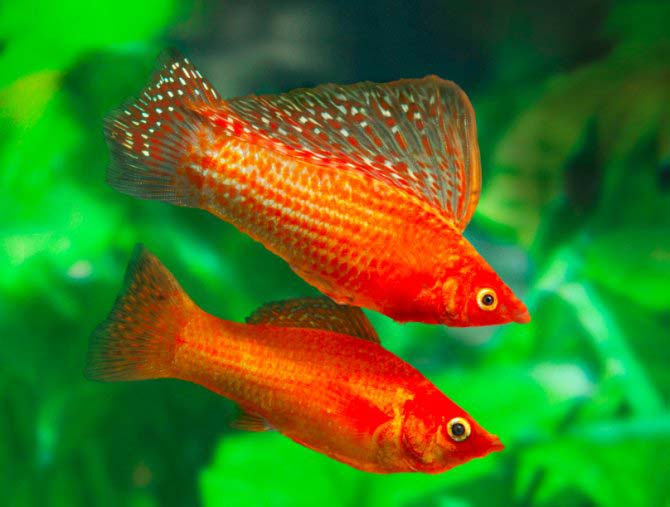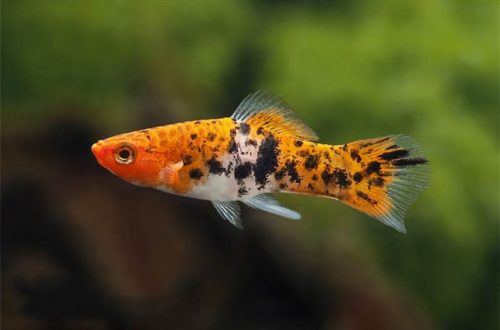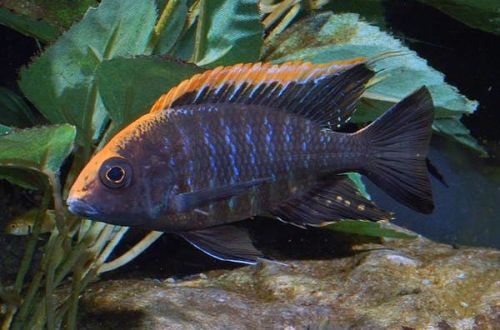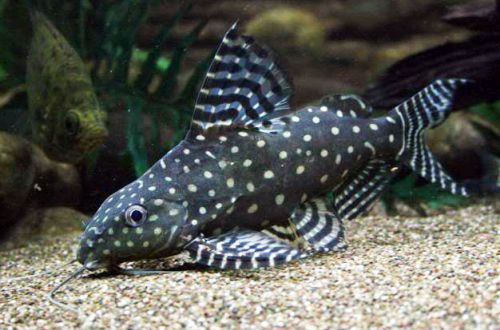
Red mollies
Red or orange mollies, English trade name Blood Red Molly (blood red Molly). It is a color variation of breeding forms of some types of Mollies. A characteristic feature is the predominant red color of the body and fins.

Unlike the closely related species of Paecilia and Swordtails, this coloring is rare, since it is not inherited and occurs as a result of a random mutation. For example, in one brood, only a small part of the fry will have red colors, the rest will remain with dominant orange hues or with various variegated colors.

Brief information:
- The volume of the aquarium is from 100–150 liters.
- Temperature – 21-26°C
- Value pH — 7.0–8.5
- Water hardness – medium to high hardness (15-35 GH)
- Substrate type – any
- Lighting – any
- Brackish water – acceptable in a concentration of 10-15 gr. salt per liter of water
- Water movement is weak
- The size of the fish is 12–18 cm.
- Nutrition – any feed with herbal supplements
- Temperament – peaceful
- Content alone, in pairs or in a group
Contents
Maintenance and care, arrangement of the aquarium
Depending on the original breed, the size of adults will vary from 12 to 18 cm or more. Thus, representatives of Molliesia sphenops are relatively small, while the lyre-tailed descendants of Molliesia velifera sometimes reach 20 cm.
Thus, when choosing the volume of the aquarium, one should be guided by the maximum dimensions, therefore, for a group of 3–4 fish, it is recommended to consider tanks from 100–150 liters.
In the design, the main emphasis is on the presence of a large number of aquatic plants, which form dense clusters. Weak little fish and fry will find shelter in the thickets. In addition, some plants will become an additional source of food. For this reason, it is worth buying fast-growing unpretentious varieties.
Optimal conditions are achieved in warm slightly alkaline water with high values of total hardness. Although breeding varieties have adapted to life in soft water, such an environment is not considered favorable, which is especially critical during the breeding season.

Mollies are inherently capable of living in brackish water, since their wild ancestors often live in the coastal zone at the confluence of fresh and sea water (river estuaries). However, the use of sea salt in the home aquarium should be avoided, especially by beginners. There is a great risk of overdoing it with concentration, in addition, the rest of the inhabitants may not be ready for increased salinity.
Food
As noted above, plant components occupy a significant place in the diet of this group of fish. With deficiencies in their main food, plants will suffer. A good choice would be specialty commercial molly foods, available from many manufacturers and available in the usual flakes and pellets.
Behavior and Compatibility
It is peaceful and gets along well with most other fish of comparable size and temperament. If veil forms are contained, then species that are prone to damage (bite off) other people’s fins should be avoided as neighbors in the aquarium. These, for example, include some barbs. In small aquariums, it is worth maintaining a group size in which the number of females will be higher than males. In cramped conditions and in the absence of places for hiding, males can excessively bother females.
Breeding / breeding
Breeding is simple and even a novice aquarist can do it. Fish regularly give offspring. The fry are born fully formed and ready to eat. As feed, you can use the same products (flakes, granules), but crushed. Parents do not care about the offspring and, on occasion, can eat their own offspring, so the juveniles should be transplanted into a separate tank with identical water conditions. However, in some cases, when there is enough space and there are places where you can hide (those same thickets of plants), then there is no need to transplant.





